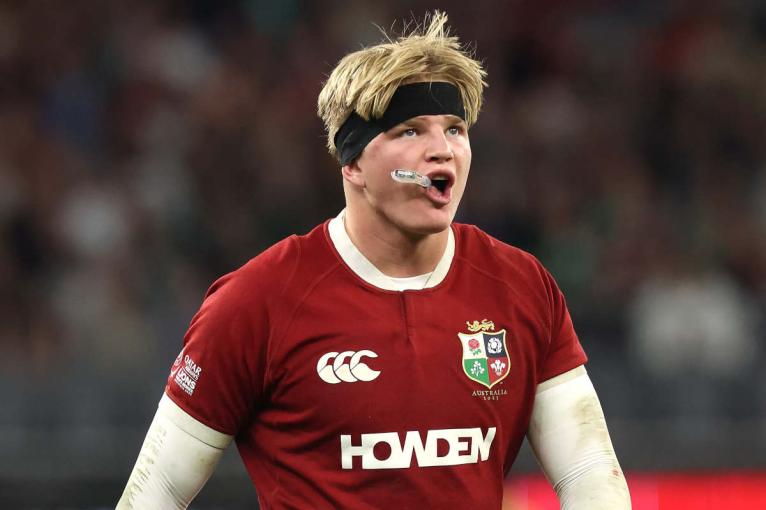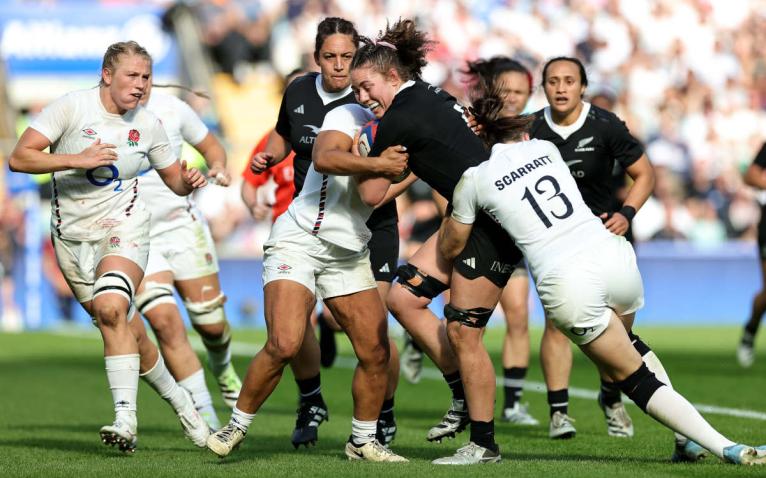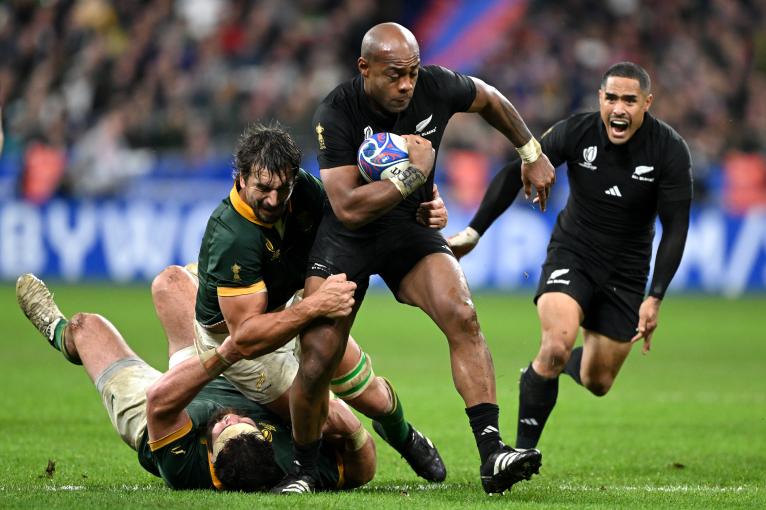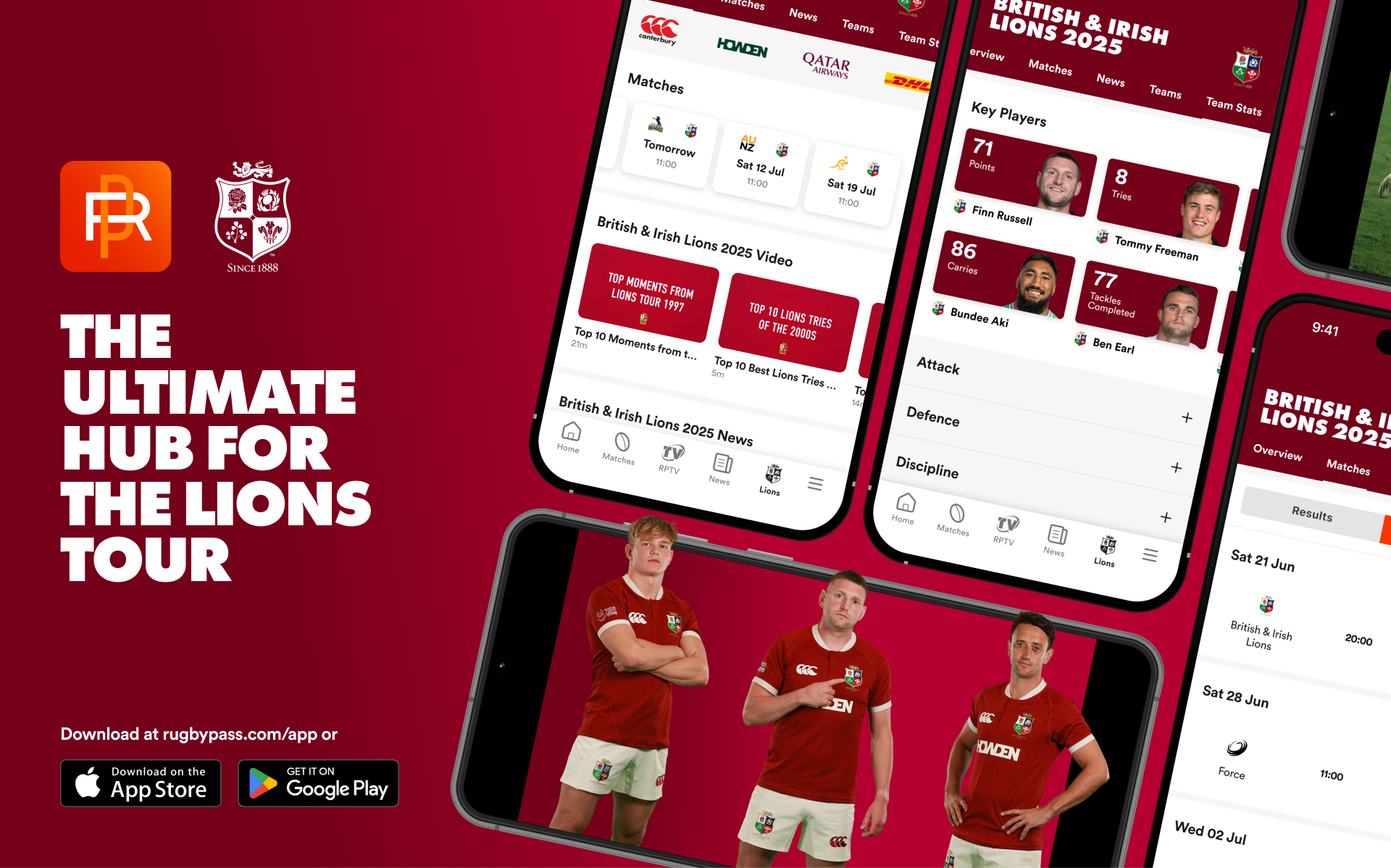The welfare of rugby players is something World Rugby takes very seriously, and while it has been happy to do a lot of its work in the shadows, their head of Player Welfare and Rugby Services, Mark Harrington, feels it’s now time to pull back the curtains on some of hard graft they’ve done. “Without wanting to yank our chain too much, we haven’t necessarily done a great job of telling our story. The new Six-Point Plan on player welfare is an attempt to put all our initiatives in one place. It gives us a vehicle to talk holistically about some of them and report back against some of the targets in a structured way, rather than seemingly random acts of welfare. It’s our North Star in terms of what we’re trying to achieve.”
The last time World Rugby took stock of player welfare was in 2021 – at the heart of the pandemic – and four years later Harrington’s had a chance to reflect how far rugby has come, and how it will look in the future. “It came down to agreeing a plan. The Executive Board signed off on the first iteration, which dated back to 2021 and ran to 2024 and they’ve just approved the second iteration this year, which carries us through to 2028. I think people have a perception that welfare is only about how you look after players on the pitch. There’s a lot more to it than that.”
Harrington explains that the second iteration of the plan is more holistic and as an example, the first version was focused on post-career care for former players, while the second one is about care for existing and former players. “A key part is the establishment of brain health clinics. They are not physical clinics – that doesn’t work on a global basis – but we’ve worked very closely in consultation with IRPA (International Rugby Union Players Association), the unions and individual player associations. We’ve launched in Wales, New Zealand, Ireland and Australia and our intention is to be up at 10 unions by the end of the year.”

The process for the brain health clinic is simple. The player signs up, completes an online questionnaire, similar to a triage, which in turn produces a report. There’s then a follow-up with one of the brain health service clinicians. Harrington says if there are concerns, they will be corralled towards their GP for further investigation. “Most of this is about good habits. Diet, lifestyle and such. On the very rare occasions they do flag any major issues, we immediately get a specialist involved who deals with the individual on a one to one basis.”
The service has been well-received and pick-up is growing. Harrington says it’s aimed primarily at players who have concerns, in essence the ‘worried well’. “Hopefully it gives them an outlet to get themselves tested and get an initial report back in terms of their bill of health. For the vast majority, it puts their mind at rest. I was chatting to Rupert Moon, the former Welsh scrum-half recently and he was saying, ‘I’m going to do it, I was just a bit scared’, so hopefully as word of mouth spreads, more players use it.”
Some may ask why this service wasn’t introduced years earlier, but Harrington says it was simply not feasible. “If I look back 20 years, lots of decisions were not necessarily evidence driven because we didn’t have the resource or technology, but now any changes to law and regulation, we try and make sure are backed by hard data, like instrumented mouthguards (IMGs).”
The whole HIA process as a tool has grown exponentially. Every elite match or tournament uses it now because it provides the best possible care.
For example, when Tadhg Furlong was pulled off the field in Dublin last week, minutes after coming on to rapturous applause, after a hefty collision, many in the crowd would have been wondering why the 19st prop was trotting back to the sidelines but the Lions tighthead did so without complaint. “With video technology, independent match day doctors and team doctors, we are pretty good at picking up anyone who’s exhibiting some of the criteria for an HIA. On the rare occasion they miss it, the IMG is a safety net. While it does not identify concussion, per se, it does flag when there’s been a significant head acceleration event. That triggers the medics to pull the player and test them. It’s giving us some fantastic data on load in games and in training, so we can then adjust a lot of our guidelines off the back of it.”
IMGs, Harrington argues, are a clear example of how game delivery is being led by innovation and research, with the return-to-play protocols at elite level backed by a team of Independent Concussion Consultants around the globe. “If a player is on an expedited return, they must be signed off independently. That relies on certain checks and liaising with a group of trained professionals on the ground. We are pushing forward on minimum standards for video technology to support TMOs and matchday doctors. The whole HIA process as a tool has grown exponentially. Every elite match or tournament uses it now because it provides the best possible care.”

With the improved welfare messaging slowly seeping into the rugby fan’s consciousness, Harrington says there can be vocal kick back from supporters and even team personnel, but that fundamentally they understand that even in the heat of battle, these protocols and procedures are there for the player’s benefit. “I get that fans will often say, ‘why is the player getting withdrawn, he looks okay?’ Yet we need to remember this is about looking after players. You can pick up a head acceleration event innocuously. It could be head on hip, head to floor. The critical thing is getting them off the field and getting a diagnosis so the care pathway can begin.”
The IMGs are a small part of the work discussed at the annual Shape of the Game meetings attended by rugby’s major stakeholders, including players, coaches and administrators. “At any one time, we have 15 working groups on the go, which could be looking at anything from player load to concussion, the 50:22 through to the tackle height working group, so we can stay on top of the latest stats for the community and elite tackle heights are at. All of those groups feed into a ‘Game On’ process overseen by the Rugby Committee Council which makes proposals for law trials or even adoption into law. There’s a massive work stream being undertaken.”
You look at on-field metrics. Whether that’s ball-in-play time, number of passes, offloads or the average cycle of play. A lot of those numbers are trending up. We’re seeing more tries, games taking less time and a really positive intent in the way lot of teams play.
With the Women’s World Cup taking place in a matter of weeks, Harrington says there is finally parity in how they are conducting player welfare research. “We made a 50-50 commitment to fund research into men and women, our Golden Rule if you like, so we have a dedicated women’s group supporting this, and as a result we’ve increased investment. The women were the first to wear IMGs at the World Cup in 2021 [played in 2022] and they will be the first to have LED boards which will light up and flash red if it meets the threshold. It will be very clear to supporters in the stands why they’re being taken off the field.”
One area rugby has seen a real upturn is in speed of play. In 2021, after an attritional Lions Series, dominated by kick tennis, critics said they feared for rugby’s future as a spectacle. “You look at on-field metrics. Whether that’s ball-in-play time, the number of passes, offloads or the average cycle of play. A lot of those numbers are trending up. We are seeing more tries, games taking less time and a really positive intent in the way a lot of teams play. There’s been a bit of a change in mindset, certainly from four years ago, which is pleasing to see.”

A speedier game has many positives, but Harrington says there is a balance to be found to ensure the game remains as safe as possible. “More ball-in-play means more collisions, more head acceleration events and potentially more injuries. We are always trying to manage safety concerns with improving spectacle. Occasionally, you can go too far on one side of the see-saw. The data in the professional game right nw, perhaps with the exception of Top 14 and ProD2, looks a bit and feels a bit different.”
While the professional game is making huge strides in player welfare, the community game hasn’t been overlooked. “The Six-Point Plan will run through to the end of the 2027-28 season and from a holistic point of view, we run a lot of injury prevention programs, stuff like Activate and Tackle Ready. The levers are different in the community game because you’ve typically got one match official and some basic medical support, but they only train once or twice a week, so the lever in the community game was to lower the tackle height. Certainly, the top 11 or 12 unions bought in, whether that’s waist height in France, or sternum height in most countries. The difference in the elite game is that the players are in a daily training environment, with a well-resourced S&C department and plentiful medical support. They are working day after day improving their technique and getting specialist contact coaching. If they do err, they attend what’s commonly known as tackle school, but it’s the coach intervention program, so they can work with their coach and the support of one of our experts, work on correction to improve technique and potentially get a week off their ban.”
The big guys have really worked on their flexibility, so credit to them and the S&C staff for helping them lower the height. t’s a lot about changing culture and habit, but we’re seeing improvements across the board.
With the much-debated doctrine of lowering the tackle height bedded in after much debate, Harrington says the global findings are that in professional and amateur environments, results show rugby is becoming safter. “We’re seeing less upright versus upright collisions and less sharing headspace. In the community game, we’ve already analysed over 120,000 tackles, so it’s a huge research project, which provides us with some really interesting global data.
Harrington can only doff his cap at the application of professional players in moderating their game to improve safety, especially those taller players like Eben Etzebeth, Lood de Jager and RG Snyman among Test locks all comfortably over 2m tall. “The big guys have really worked on their flexibility, so credit to them and the S&C staff for helping them lower the height and getting those hip flexors sorted. It’s a lot about changing culture and habit, but we’re seeing improvements across the board.”

On every working group, Harrington says they have player and match official representation. Often they’re recently retired players like Conrad Smith and Rachael Burford, alongside coaches like Johaan van Graan or the All Blacks’ S&C guru Nic Gill. “The right voices are in the room because the last point on that Six-Point Plan is around fostering a culture of welfare. If you look at consultation, regulation and monitoring, we’ve made a conscious effort to engage the players and match officials more in the decision-making process. Sometimes that that prolongs our work, but it does mean we’ve done a lot of alignment before it gets to the decision-making space.”
Looking to the future, Harrington says his department are constantly working on ensuring players are as safe as possible, yet as he witnesses the inaugural Club World Cup playing out in America this summer, he knows there is still much to do. “Hosting a World Cup in America is not going to come without its issues, especially when you’re trying to take rugby into NFL stadiums, because they are so much narrower than rugby pitches. People don’t think of this as a welfare issue, but already there’s a massive amount of work going on into the types of surfaces being played upon, making sure players have appropriate runoffs, making sure the equipment and clothing used is adequate so the wearer or opposition aren’t injured. In the near future, making sure we account for ambient heat with new technology we’re rolling out at the U20 World Championship and Women’s World Cup. All of our work adds up to trying to protect and look after players. That’s our number one goal.”
News, stats, videos and more! Download the new RugbyPass app, in collaboration with the British and Irish Lions, on the App Store (iOS) and Google Play (Android) now!



Comments
Join free and tell us what you really think!
Sign up for free